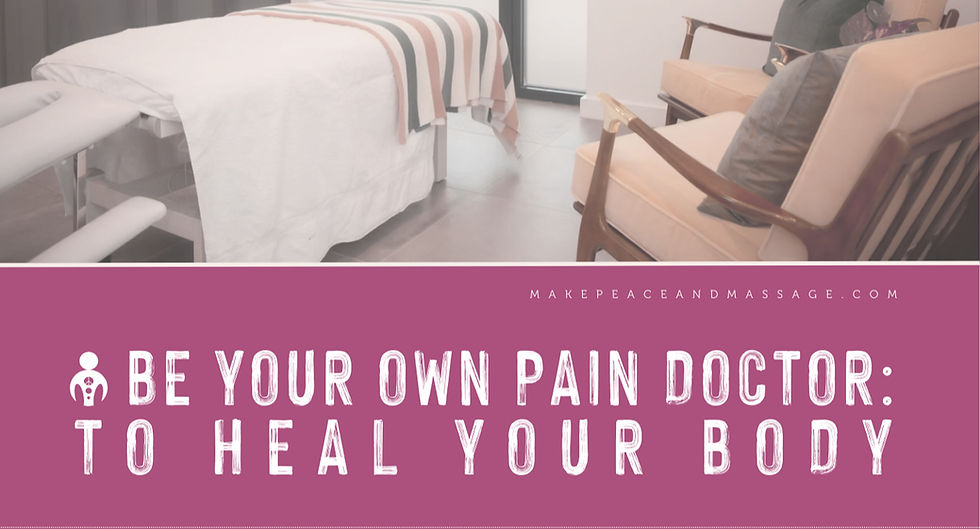Let's Get to the Bones of It!
- carmenmakepeace

- Oct 28, 2022
- 6 min read
Updated: Feb 5, 2024
It's a halloween special today!
Today we’re going to talk about bones, what they do, how you use them and most importantly how they adapt to you, your hobbies, and the ways you love to move.
What do bones do?
Most people think about bones the way they learnt them at school.
Bones hold us up,
Bones offer the structure and scaffolding on which muscles act to produce movement
Bones offer protection from the big wide world
Bones provide a reservoir of minerals like calcium and phosphorus that are essential to everyday life and homeostasis within our bodies.
The core of bones (marrow) act as manufacturing facilities to produce red and white blood cells and many immune cells.
Bones really aren't static structures.
Whether it's movement like this...
Or Cellular industry like this...
They are part of an intricate system of: cellular industry -blood cells, mineral reservoirs, fascia sheaths that surround bones, connective tissues that bridge joints and joint muscle interactions, and fascia that surrounds and wraps at all those integral layers.
So how do we move?
We move via the activation of muscles on joints.
Movement occurs via contraction (shortening) of muscle fibres that reduce their overall length.
This length change produces a force on a joint via the muscle’s tendonous attachment.
These attachments are often sites of stress concentration when the force is applied.
What do engineering systems look like & what materials do they use?
Think about an engineering system. Have you ever seen a hinge or lever system with one hard stiff material aided by a soft elastic/squidgy one?
There is a reason that an aeroplane’s engine, spinning at incredibly fast, isn’t made of a soft structure between the turbine blades and turbine axis. It’s incredibly hard to distribute force between two really different materials.

Joints are composite many layered structures
Our biology manages to utilise hard compact bone and surround it with soft cartilaginous tendons and ligaments!
Incredibly with these blended complex materials, our bodies can bend and move in a multitude of directions all the time. To do that we have to be incredibly resilient at all the points of force generation and transfer.

The attachment sites between muscle tendons and bone are incredibly strong.
Have you ever wondered why these boney attachment sites are often rougher than the compact bone surrounding them?
Increased surface area is one advantage but actually as muscles contract and their tendons apply a force on bone to move under higher and more repetitive loading regimes this actually plastically deforms the bone a small amount, leading osteoblasts (bone forming cells) to come in and lay down a little extra bone!
This is particularly apparent in younger children and adolescents whose bones haven’t completely ossified – (hardened).
Around the knee joint Osgood Schlatter's disease can develop with repetitive loading in rare cases. The boney attachment of the patella ligament increases in size whilst the young person is still developing putting strain on the patella/quad system. Osgood Schlatter's disease clears post adolescence and has no further cause for pain or inflammation or any loss of function in adults.

So thinking of bones as dead wood that doesn’t do much isn’t really true at all.
How do joints adapt and change over a life time?
In the instance of movement, tendons and muscles apply forces to bones, and bones being living structures adapt and change because of those forces -fascinating right!
In childhood through adolescence, it’s most obvious, but the process of bone building and bone remodelling (resurfacing and clearing away redundant extra) is always present.
What that means is when we exercise, to a bone, we are applying a dynamic force. This dynamic stimulus changes our bones both mechanically and chemically producing a bone growth process.
As a force is applied and some level of damage occurs to that linking structure in a joint, new bone is laid down to strengthen it.
Other bone cells (osteoclasts) later come to the site and remodel and refine these areas. If the same loading pattern is applied again and again with progressive increase in loading force, eventually the joint changes shape to reflect the needs we are choosing to place it under including the tendonous attachment site shape!
What, the movement I choose literally reshapes my body!
In my case it is weightlifting and tennis. Weightlifting places a lot of stress through the legs, hips, and lower back.
They are our force production power houses as we lever the bar and accelerate upwards as fast as possible.
In this case we are tensioning the bones of the hips and balancing both gravity and accelerating the reactive force of the ground upwards as we heave that bar in the most fluid way possible.
As soon as that bar is past us and slowing its upwards trajectory, we are actively accelerating under the bar with gravity to stabilise it, and our bodies are put under compressive stress against the bar falling onto us.
Throughout the upward drive, we externally rotate and extend our hips into the floor via our feet using: adductors, hip flexors, key back muscles - erectors & quadratus lumborum, and glute muscles.
My change due to years of weightlifting...
My range of motion in external rotation (turning my foot outwards) from the hip is far greater than my internal rotation –I use this less.
I don’t doubt that my hip ball and socket shape has been defined by my love of running at an early age, alongside climbing, but more recently my love of weightlifting in the last 10 years and now the joy I find in tai chi and tennis.
The point is each one of us is a unique and wonderful mix of all the things we've loved to do and experienced. It's almost impossible to attribute posture or function to just one thing -because we change moment to moment based on our choices, our environment and our psychology
Take home points: be more dog!
The more varied your sports, the more resilient your joint shape will be as more force directions are placed on them in a more varied manner.
I love these facts – not only do your muscles respond to your movement choices and become resilient, strong, and skilful, but your very bones and their joint shapes change with the exercise you choose.
The benefits of weight bearing bones...
Most people know that weight bearing activities improve your bone density.
Most don’t know that you reach your maximal bone density via the weight-bearing activities you do up to your late 20s and early 30s.
It’s so important to encourage exercise and a love of movement from an early age.
Higher bone densities can also be achieved by progressively and carefully picking up a weight bearing sport at later ages too and can 100% help you into future years.
Greater bone densities prevent injuries and falls in later life which keep you moving longer – enjoying all the benefits physically, psychologically, and socially into advancing years.

We were made to move! Our lymphatic system relies on it -but more about that next week. For now, just remember….
A powerful resolution - loving an activity
The pointis each one of us ins a unique and wonderful mix of all the things we've loved to do and experienced. It's almost impossible to attribute posture or function to just one thing -because we change moment to moment based on our choices, our environment and our psychology!
In the cases of chronic pain and rehab from surgery or injury, it’s much harder to work your way back to movement. I really understand, I’ve been there myself and looked at a mountain of small changes when starting out on a road to recovery. But I promise you the effort is worth it.
Clinical Massage & Rehab: helping those in chronic pain
My job as a clinical massage and rehabilitation therapist is to support you.
To help you step by step along that road back to a joy of movement and activity.
I do not judge what your movement/functional goals are.
I love the passion my clients have for their hobbies and activities:
Gardening,
Walking,
Golf,
Running,
Cycling,
Ultra-marathoning,
Weightlifting,
Gymnastics,
Horse riding,
Aerial hoop;
Honestly the list is amazing and impressive.
It is my passion to help you find the fun and explore movement again, whether that’s releasing areas of your body lacking range of motion, and helping you to literally access the movement you want to do; or whether it’s balance or building strength, or sometimes managing anxiety and stress.
Our very activities, the things we love doing, actually and quite literally shape us.
Please don’t hesitate to get in touch if you’d like help with your current and future goals.











Comentarios